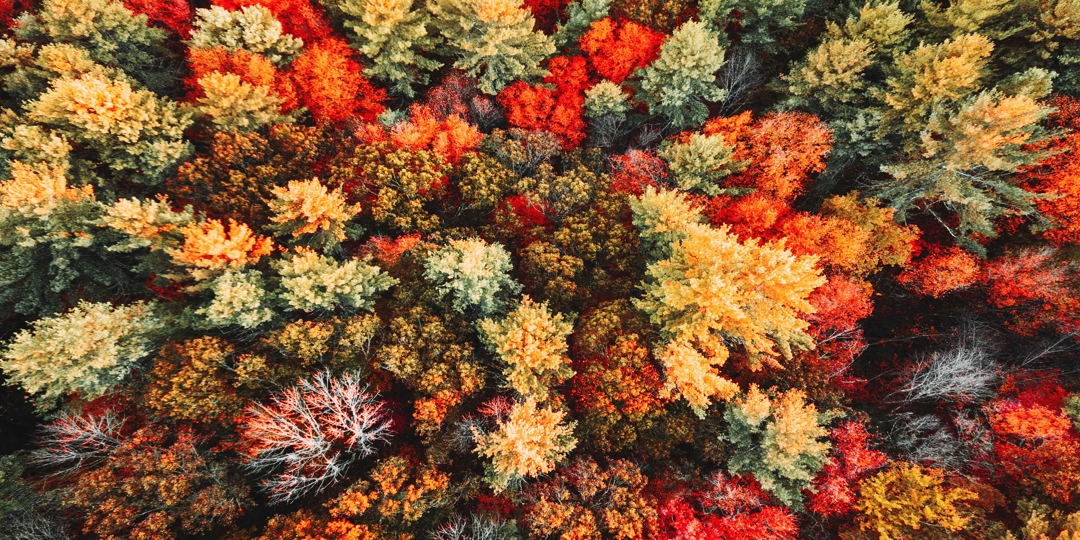Fall is one of the most beautiful times of the year for trees. One of our favorite things is watching the foliage begin to change as the season progresses. The trees in our customer's yards add a pop of fall color. The forests become a beautiful mosaic of bright yellow, deep red, and green undertones.
Everyone loves to witness the fall foliage change, but have you ever wondered why it happens and what causes the trees to change different colors rather than one consistent hue? Today's blog provides some insight into this phenomenon.
What gives leaves their color?
The color of leaves derives from molecules of chlorophyll that give them their green hue. Chlorophyll is an essential resource for plants as it is how they produce food through sunlight.
Throughout the warmer seasons, when there is no shortage of sunlight, plants produce an abundance of chlorophyll. However, when temperatures begin to decline and the sun makes fewer appearances in the fall, many trees and plants chlorophyll production comes to a halt, and they begin to break down their chlorophyll further instead. It's within this stage where chlorophyll halts and begins to break down that causes the foliage to change colors in the fall, taking on a red or yellow hue.
After the leaves change their colors, they drop their leaves to preserve energy because chlorophyll production requires a substantial amount of energy for the tree. Once the warmer season comes and the amount of daily sunlight increases, the plants begin to produce chlorophyll again.
Aside from chlorophyll, there are two additional pigment molecules in leaves called carotenoids and Anthocyanins. The carotenoid molecules are what cause the leaves to transform into those bright yellow and orange pigments. In fact, anthocyanins are only produced in the fall and help protect leaves from being fed on by pests or getting sun burned.
Watch out for this!
While this color change and the leaf drop is a part of energy preservation for the trees, it is crucial to keep an eye out for leaves that experience premature leaf drop and changes of colors in species (i.e., evergreens) that do not go through this as it can be a sign of infestation or disease. If you notice these, please don't hesitate to give our plant health care experts a call!

